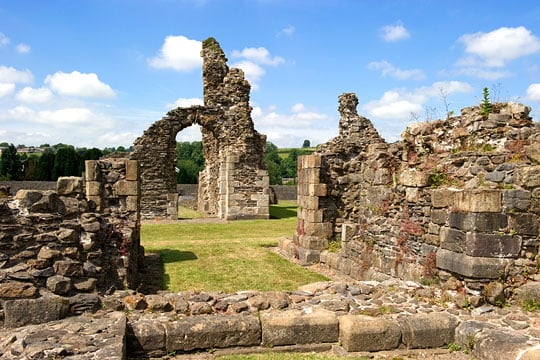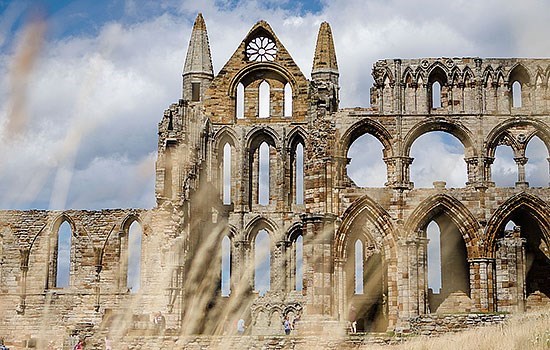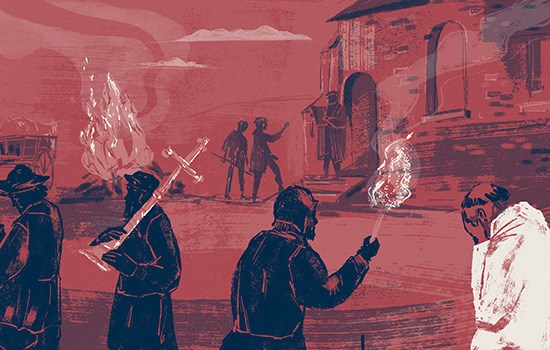History of Sawley Abbey
Sawley Abbey was founded in 1146 on land given by William, third Lord Percy. The Percys, Northumberland’s greatest family, remained patrons of the abbey for much of its existence.

The help of these wealthy benefactors proved invaluable in the 1280s when it seemed likely that the monks would abandon the site: they claimed that poor harvests, marshy ground and the inhospitable climate made life at Sawley untenable. In response, Maud de Percy, Countess of Warwick, gave valuable lands and churches at Rimington (near Barnoldswick), Ilkley, Gargrave and Tadcaster. With this new endowment the monks stayed put.
Their problems, though, did not disappear. In 1296 Stanlaw Abbey in Cheshire was refounded at Whalley, nine miles from Sawley, and the two Cistercian houses immediately quarrelled. Their lands adjoined and they squabbled over grain supplies and fishing rights in the river Ribble.
The feuding officially ended in 1305, but the monks of Sawley, the senior foundation, continued to feel aggrieved. Sawley was considerably poorer than Whalley: it was impoverished by litigation, the ‘cruel and inhuman spoliation’ that accompanied Scottish raids about 1320, and the expense of providing board and lodging to travellers – unlike many Cistercian houses it lay on a busy main road.
In spring 1536 Sawley surrendered during Henry VIII’s Suppression of the Monasteries. However, that autumn, during the northern rising known as the Pilgrimage of Grace, the abbey was restored under a new abbot, William Trafford. The rebellion failed and Trafford was hanged at Lancaster in March 1537 and the abbey immediately plundered of its valuables.
During the following three centuries all the high-quality stone was taken and reused in neighbouring farms and cottages, and many of the abbey buildings disappeared. In 1848 the first archaeological investigation of the ruins was undertaken, and during the 20th century the site was taken into the care of the state, cleared of debris and conserved.
Description
The poverty of the abbey was probably the reason for its strangest feature: its extremely short nave, still clearly visible today. It is known that it was intended to be full length because the cloister, on the south side of the church, was built to normal size, but probably a lack of money meant that the nave was never finished. In contrast, the chancel at the east end is exceptionally wide because new aisles were constructed to the north and south in the early 16th century, when more funds were available and ambitious rebuilding was fashionable. The result was a church unlike that of any other Cistercian abbey.
Another impressive feature visible today is the well-preserved night stair in the south transept, used by the monks to walk from the now-vanished first-floor dormitory down into the church for night-time services.
On the west side of the cloister is the substantial ruin of the abbot’s lodgings: this was converted to a cottage after 1537, and the great fireplaces and ovens date from this later period. Note, too, the stone-lined drains for the monastic latrines at the south-west corner of the site.



